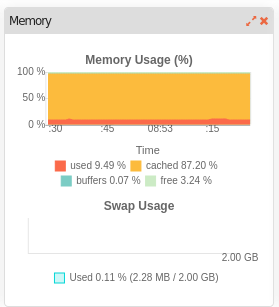Welcome @curto , that’s an interesting post! I have some thoughts…
Step 1: Setup Rockstor on a boot SSD - yes that’s ideal and exactly what I have done
Steps 2 to 5: Not sure how the Rockstor GUI will handle non-BTRFS drives/pools. You could possibly mount the existing array in the underlying OS with CLI, and copy data across from there, a drive at a time, then resize existing array down as you work through your disks. It’s not something I’ve tried so hopefully someone with experience will chip in here.
Just a note on the OS: the only current installer is Rockstor v3-something, and is based on CentOS. A new version of Rockstor is tantalisingly close to release: there are a few activities that need to be completed in the background before this is released into the wild.
However, it is possible to build your own v4 installer from the current beta (v4.0.5) and this is based on OpenSUSE Leap 15.2, which is the future of Rockstor.
There is a great thread here:
Can BTRFS handle different drive sizes? Yes it can - there is a handy online space calculator here which I’ve used:
https://carfax.org.uk/btrfs-usage/
A note of caution as you refer to Raid6 in your post. I don’t believe that Raid5 and 6 are yet considered production stable in BTRFS - there’s plenty of discussion on the web around this, however some of what i have seen appears to be more scaremongering, but I thought I should highlight it anyway. I have used Raid0, 1 and 10 successfully. If you haven’t already done so, there is a lot of interesting stuff online explaining how BTRFS does it’s raid thing - its different to the traditional multi-drive mirror raid (eg raid1 with 3 drives), but with the same end-result (but much more flexible).
Memory Requirements: I dont think Rockstor has excessive memory requirements. I run with a puny 8GB no problem. Without any Rock-ons (docker containers) running, I see typically <10% memory used with most of the rest as buffer/cache, and a few percent truly free:

Rock-ons will increase that memory usage, but I’d say 16GB is easily more than sufficient.
One other thing is that adding and removing drives to/from a BTRFS pool can be done with the NAS still online: each time this is done Rockstor runs the ‘balance’ which can be time consuming depending on how much data is in question, but better than having the appliance offline.
If I think of anything else, I will come back.
Cheers
Geoff